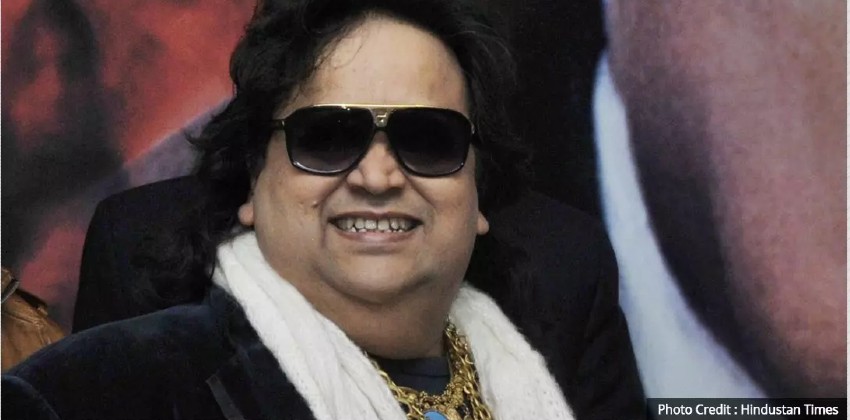Explained: What Is Obstructive Sleep Apnea That Bappi Lahiri Suffered

Obesity is one of the major reasons for the obstruction of breathing during sleeping and causing sleep apnea.
Veteran singer and music composer Bappi Lahiri passed away today morning. His attending doctor at Criticare Hospital, Vile Parle, Dr. Deepak Namjoshi told the media that Lahiri suffered from Obstructive Sleep Apnea.
The 69-year-old musician who was well known for his disco tunes was readmitted to the hospital on February 15. Before his discharge, he spent 29 days in the hospital receiving treatment for apnea and a chest infection. However, Dr. Namjoshi said that the singer's health deteriorated at home.
Sleep apnea is characterised by an obstruction in breathing while sleeping. There are primarily two types of sleep apnea, Dr. Jeenam Shah, interventional pulmonologist and sleep apnea management specialist, told BOOM.
"Obstructive sleep apnea is when breathing is hindered due to the narrowing of the windpipe and air does not reach the lungs, while centric sleep apnea is linked to the brain not correctly giving signals to the muscles involved in breathing," Dr. Shah explained.
How Is Obstructive Sleep Apnea Diagnosed?
If a person has obstructed breathing while sleeping and is prone to gasping and choking, it is pertinent that they get themselves checked for sleep apnea. Snoring is another common trait witnessed in several people who are diagnosed with sleep apnea. However, doctors also caution that not every person who snores suffers from apnea.
For diagnosis, patients sleeping cycles and patterns are observed at hospitals. Another characteristic of those suffering from sleep apnea is that they suffer from drowsiness during the day thus hindering their other activities.
At the hospital, there are machines that assess electrical signals sent by the brain to diagnose sleep-disordered breathing.
"Obesity and accumulated fat in the neck region is one primary way to notice and diagnose obstructive sleep apnea," Dr. Shah told BOOM.
How Can It Be Prevented And Treated?
"The primary prevention and treatment mechanism is finding ways to reduce your body mass index through regular exercising. Getting completely cured of obstructive sleep apnea is difficult but it definitely can be managed," the sleep apnea management expert said.
Apart from obesity there are other factors such as thyroid, allergies, tonsils, and adenoids can also be causative factors. The preventive measures of keeping anti-allergens handy, avoiding allergy-inducing food are applicable to preventing apnea, too.
While surgery is a possibility, doctors normally recommend another therapy called Continuous Positive Airway Pressure.
"In CPAP, the person is supposed to sleep with a particular air pumping mask every single night. This mask creates air pressure which assists the upper respiratory pathway or the windpipe to broaden and allow breathing. The lungs are then inflated and carry out the process of inhalation and exhalation," Dr. Shah explained.
CPAP, however, only manages the disorder. To be completely treated, weight loss along with avoiding smoking and consuming alcohol are the most important parameters.
Can Sleep Apnea Cause Death While Sleeping?
A person suffering from sleep apnea tends to wake up at night as the brain identifies low oxygen levels and pulls the person out of sleep. In obstructive sleep apnea, the person stops breathing for 10 seconds and that could occur for as many as 20 times within an hour. However, the brain sends signals to the upper respiratory pathway which leads to the person waking up as if they are gasping for breath or choking.
Diagnosis of obstructive sleep apnea does increase the probability of dying due to cardiac arrest. According to the American Sleep Apnea Association. over 38,000 people in the US die each year from heart disease with sleep apnea as a contributing factor. Additionally, a study by the Yale School of Medicine found that those who are obese and suffering from sleep apnea are at a 30 per cent risk of suffering heart attacks or cardiac arrests within a period of four to five years.
 Call For Appointment
Call For Appointment